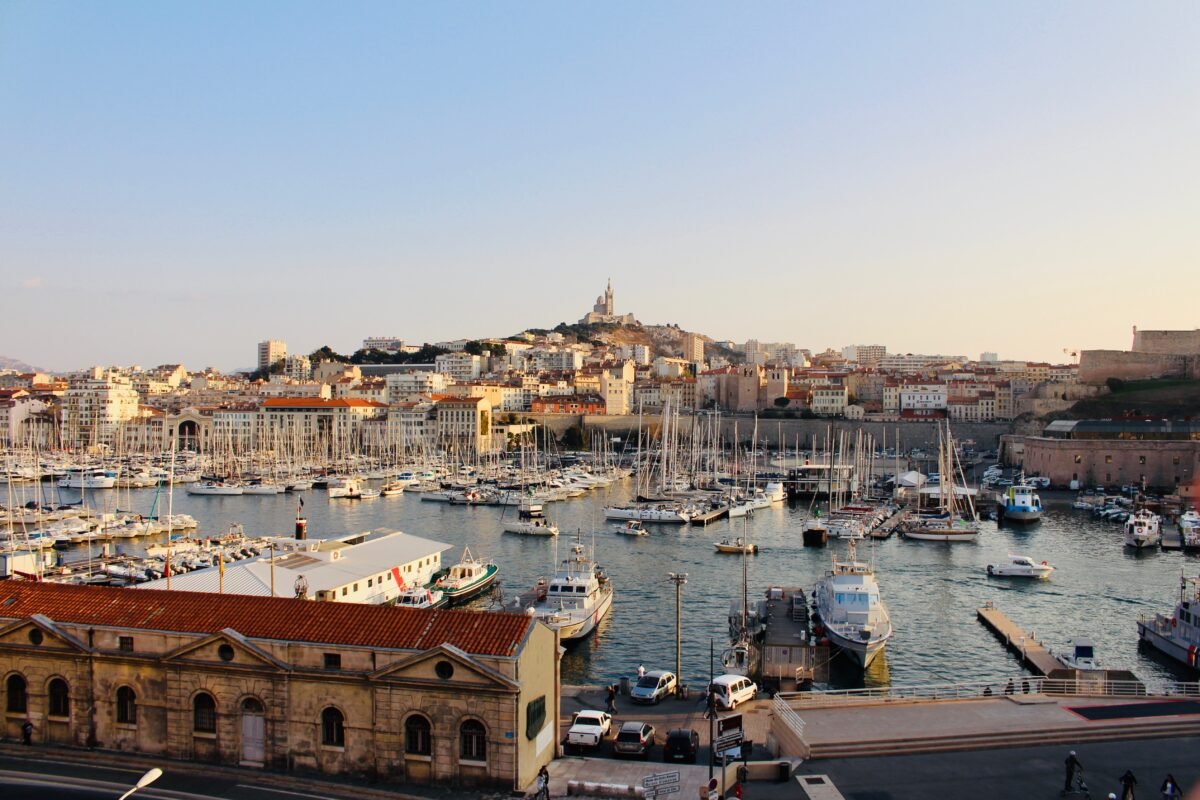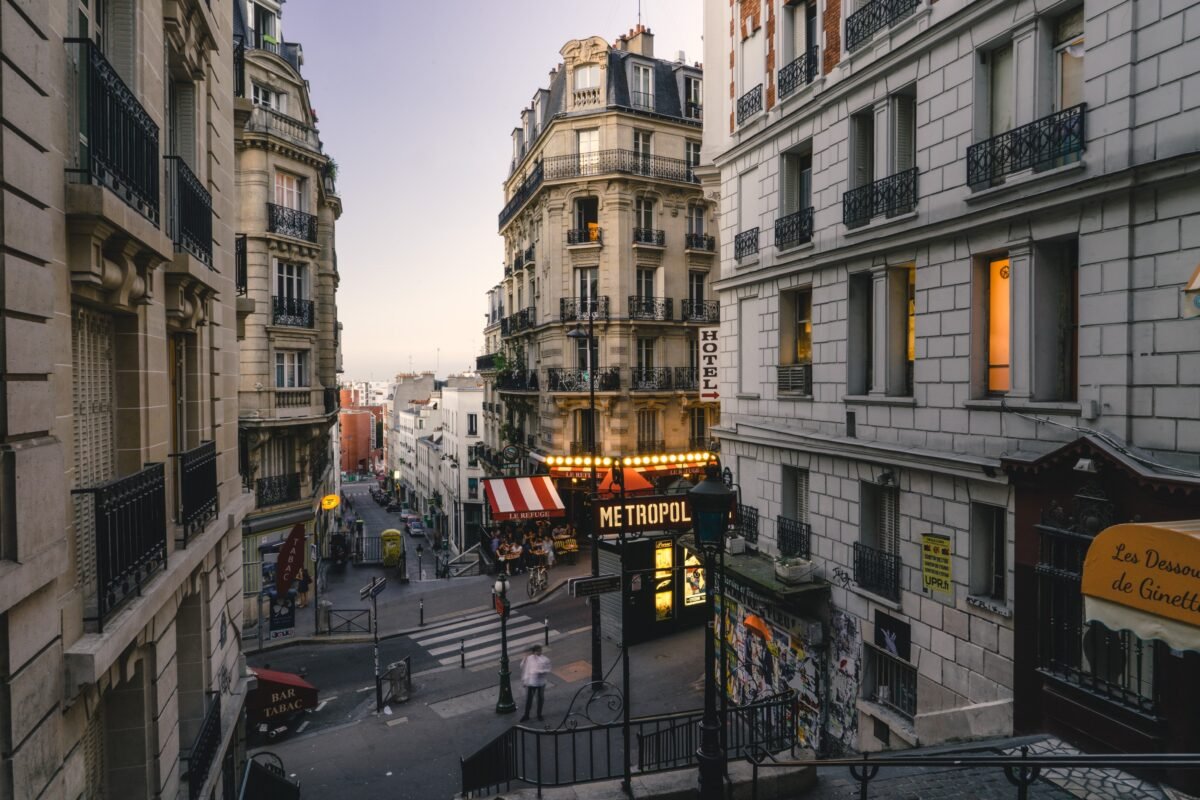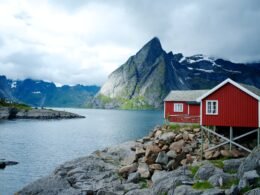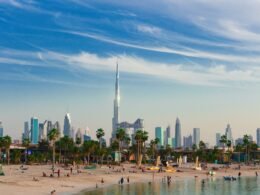Your journey will start in the bustling city of Paris before you head south to the French Atlantic coastline and Bordeaux. Following your time in Bordeaux, you will hit up the med coastline and explore Marseille, the Calanques National Park, Nice, and if you want, the tiny country of Monaco.
Table of Contents
- Day 1: Arrive in Paris – Eiffel Tower and Palace of Versailles
- Day 2: Paris – See the Mona Lisa at the Louvre Museum
- Day 3: Paris – Montmatre and The Basilica of Sacré Coeur de Montmartre
- Day 4: Train to Bordeaux, Place de la bourse
- Day 5: Go on a wine tour in Bordeaux
- Day 6: Arrive in Marseille and explore the Old Port of Marseille
- Day 7: Marseille – Go to Calanques National Park
- Day 8: Nice
- Day 9: Head to the beaches in Nice
- Useful tips for traveling in France:
- Final thoughts:
- Other Europe itineraries:
Assuming that you are traveling from outside of Europe, you will most likely be traveling into the country via plane.
Once in France, you will travel way more efficiently and cheaply by taking high-speed public trains between cities. Most tickets cost between €10-30 and can get you to destinations faster than by car in most situations.
Day 1: Arrive in Paris – Eiffel Tower and Palace of Versailles
You have just arrived in France! The most accessible city to travel to is Paris, the country’s capital city. To get from the airport to the city center, you can hire a cab to take you directly to your hotel. If you are a budget traveler, you can take one of the regional express trains, which run every 10 minutes.
Depending on the time you arrive and how long your flight was, you may need some time to recharge in your accommodation. When you are ready to get into the city, your first stop is to see the Eiffel Tower – one of the most recognized monuments in the world.

What to do:
See the Eiffel Tower: Make sure your camera is fully charged when heading down to the Eiffel Tower, which is the symbol of France. It measures over 1,000 feet in height, known colloquially as the “Iron Lady” The Eiffel Tower is free to see from afar, but you will have to buy a ticket in order to enter the tower. Depending on your budget, it may be worth it to pay the price, as you will be able to explore the first and second floors, which have various cafe and lounging areas, as well as the summit, which offers panoramic views of all of Paris.
Visit the Palace of Versailles: Another one of the most visited attractions of France, the Palace of Versailles dates back to the 17th century and was the residence of French kings Louis XIV and Louis XVI. You will have to buy a ticket to enter, but the entrance allows you access to the immaculate gardens, the main palace (which consists of over 2,000 rooms), and the Queen’s Hamlet.
Where to eat?
Madam Brasserie (located in the Eiffel Tower)
Where to stay in Paris?
Day 2: Paris – See the Mona Lisa at the Louvre Museum
You cannot leave Paris without visiting some of its most popular museums, which are recognized globally

What to do:
Go to the Louvre Museum: The Louvre Museum in Paris is globally recognized because it houses arguably one of the most popular paintings in history – the Mona Lisa. Other famous pieces in the museum include Vénus de Milo, La Liberté Guidant le Peuple, and Victoire de Samothrace. Admission to the Louvre costs €17 for foreign visitors. The outside architecture of the Louvre is also not to be missed, as the museum is also recognized for its glass pyramids outside.
Where to eat?
Check out our further Earth Curious content on Paris to prepare:
- Is Paris Expensive To Visit?
- The Best Days Trips From Paris By Train (Perfect to extend your trip!)
- The Best Time To Visit Paris To Avoid Crowds (This article can apply to visiting France in general!)
- Is Paris Safe to Visit? (2023 Guide)
Note: All of the above links will open in a new tab, so you can save them for reading after you are done with this article.
Day 3: Paris – Montmatre and The Basilica of Sacré Coeur de Montmartre
After a full two days of sightseeing, take some time for relaxation and a brisk stroll.

What to do
Explore the neighborhood of Montmartre: Montmartre is known for its cozy village feel and bustling art scene, which has inspired artists over the years such as Van Gogh and Picasso. For a more in-depth look into the neighborhood, go on a free walking tour, where you can learn the history of the area from a local guide. Make sure to stop at one of the cozy cafes for a coffee along your exploration.
Visit the Basilica of Sacré Coeur de Montmartre: Another important monument of Paris, and is one of the most important religious sites in the city. Visitors can enter and climb to the top of the dome for views of the city, or lounge in the grass of the grounds.
Where to eat?
Day 4: Train to Bordeaux, Place de la bourse
Travel time: to travel from Paris to Bordeaux, take the high-speed SNCF TGV train, which is the most economical and fastest option that takes just over 2 hours. standard class tickets start at about €16 one-way.
Known as the heart of the wine region of France, Bordeaux is known for its gothic architecture and idyllic French countryside.

What to do and see
Place de la bourse: Known as the iconic symbol of the city of Bordeaux, this palace is a UNESCO World Heritage site, dating back to the 18th century. The Palace offers free admission for visitors, but it is worth it to pay a little extra for a guided tour to learn about the historical and cultural significance.
Where to eat?
Where to stay?
- $$$ – Villas Foch Bordeaux
- $$ – ibis Bordeaux Centre Mériadeck
- $ – Central Hostel
Day 5: Go on a wine tour in Bordeaux
The Bordeaux region is known for its extensive wineries, so you cannot leave without trying some world-class wine. The best time to visit is in September, which is grape harvesting season in France.

Best wine tours in Bordeaux
Château Bernateau: a family-owned winery that operates tours in French and English. Prices range between €6-10 per person.
Château Coutet: Located about 20 minutes from the center of St. Emilion – another winery that is family owned and operated. A special aspect of this winery is the extensive gardens and ponds on the property, which are frequented by many ducks and geese.
Where to eat?
Day 6: Arrive in Marseille and explore the Old Port of Marseille
Travel time: Direct trains from Bordeaux to Marseille last about 6.5 hours, so it may be more efficient to fly, which only takes about an hour. There are also options for overnight trains, so you can get a night’s sleep while you travel.
The next stop on your France itinerary is the quaint city of Marseille, located on the southern coast of the country.

What to do
Walk around the Old Port of Marseille: With a rich maritime history and cultural significance, the Old Port of Marseille is a great place to stroll and interact with the locals. Make sure to stop by the Quai des Belges Fish Market, which is the heartbeat of the Old Port. When you get hungry, enter one of the many cafes, restaurants, and bars that are located along the main streets.
Where to eat?
Where to stay?
Day 7: Marseille – Go to Calanques National Park
Travel time: You can get to the Calanques National Park very easily from Marseille. Check out the park’s website here. You can travel by public bus, sea shuttles, in your own car/rental car or by bike.

What to do
Hike in Calanques National Park: Located in the south of France, this national park boasts over 20 kilometers of coastline and is the only European park to have land, sea, and urban areas in the same park. You can easily spend the entire day exploring some of the many hikes that Calanques has to offer. The most notable trails to check out are the Calanques de Cassis Trail, Calanque de Sugiton, and Calanque de Marseilleveyre.
Where to eat?
Day 8: Nice
Travel time: The most efficient way to get from Marseille to Nice is by train, specifically the TVG “OuiGo” trains. The trip lasts about 2.5 hours, and tickets are about €20 one-way.
Nice is known as France’s most popular beach city. Use the end of your trip to relax!

What to do
Walk the Promenade de Anglais: Literally translating to “walkway of the English” this promenade stretches about 7 kilometers along Nice’s coastline. It is extremely pedestrian-friendly and has bike lanes for cyclists as well. Along the way, you can find many cute shops, restaurants, and souvenir shops.
Take a day or afternoon trip to Monaco: Monaco is the epitome of luxury and grandeur. A tiny country nestled on the glorious French Riviera, Monaco has long been a haunt for the rich and famous, thanks to generous tax laws, beautiful scenery, and fantastic weather. Best of all, it’s only 25 minutes away from Nice by train! Read our full Earth Curious guide on getting to Monaco from Nice, and what to do when you get there.
Where to eat?
Day 9: Head to the beaches in Nice
Don’t leave Nice without putting on your bathing suit and heading to the beach.

What to do
La Réserve beach: a lesser-known beach with less tourist traffic. It is tucked away but still very accessible to the downtown area.
Opéra Plage beach: A private beach that also has a former opera house pavilion.
Plage Beau Rivage: Another private beach located very near the Old Town with access to plenty of luxury restaurants and accommodations.
Where to eat
Leaving France:
After your time in Nice, you can either leave from Nice airport (year-round, Nice has flights to most major cities in Europe, and during summer months there are a fair number of international destinations too.
Otherwise, you can easily get a high-speed train back up to Paris and leave France from there. The fastest trains take just under 6 hours, and when booked in advance tickets cost around €30 one-way.
Useful tips for traveling in France:

The best time to visit France:
For the most pleasant weather conditions, the best time to visit France is in the summer, between June and August. Because of the favorable weather, this season is also the peak tourist season in France. Although everything operates at full capacity during this time, it also means you will be competing with crowds and higher prices. If you want to save money and avoid the crowds, consider visiting during the shoulder seasons of spring (April-May) and fall (September-October). Not only is the weather cooler, but there are fewer tourists.
What is the currency of France?
The national currency of France is the Euro. The Euro is also the currency for many other neighboring European countries, such as Germany, Italy, Spain, Portugal, and more. So, if your trip to France is part of a longer trip throughout Europe, you won’t have trouble constantly exchanging currency.
Can you drink tap water in France?
Yes! The tap water in the entirety of the country is safe to drink. You should not have a problem filling your bottle with tap water in most given regions in France, especially in large cities like Paris.
The language of France:
The national language of France is French, which is the first language of 88% of the population. It is a great place to practice your French if you are actively trying to learn it. If you don’t know any French, you should download some language apps or a translator, as only 39% of the population has some degree of English proficiency. For larger tourist areas, you most likely will not have a problem, as English is more widely spoken in these areas. You will have more luck speaking English with younger people, as older generations over the age of 50 were generally not formally taught English in school.
Is France safe?
France is overall a safe country to travel to solo or in a group. Rates of violent crime are generally low, and the most common crimes against tourists are petty theft and pickpocketing. With this in mind, always proceed with caution no matter how safe you perceive an area to be.
Related: 15 Of The Best Places To Visit In France
Final thoughts:

If you are looking for an adventurous itinerary with many diverse places to see, look no further than France. Not only does the country have much historical relevance, but you will be blown away by its incredible art, food, and views. The best aspect of traveling in France is its access to efficient and cheap transportation by train, which can allow you to see the entire country in one trip.
Other Europe itineraries:
Here at Earth Curious, it is our goal to have amazing content published about every country in the world! We are slowly getting there!
If you’re thinking of spending some more time in Europe and fancy visiting other countries and not just France, then why not check out some of our other country itineraries below?
Note: all of the below countries, border France and you can easily take a train to get to the next country. If you’re using trains in multiple European countries you might want to consider getting an interrail pass, there is more on that here.
- 7-Day Germany Itinerary (A 2023 Guide)
- The Ultimate 3-5 Day Belgium Itinerary
- The Best 9-Day Switzerland Itinerary: Detailed Guide
- The Ultimate 2-Week Italy Itinerary: Exploring The Entire Country
Stay Earth Curious!














